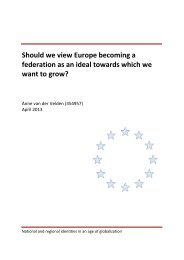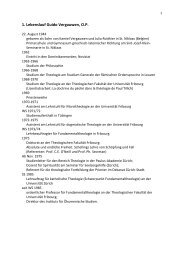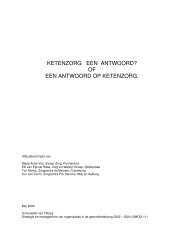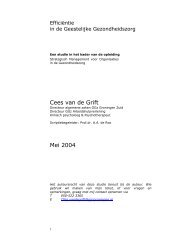Here - Tilburg University
Here - Tilburg University
Here - Tilburg University
Create successful ePaper yourself
Turn your PDF publications into a flip-book with our unique Google optimized e-Paper software.
Presenter<br />
Bennink, Margot; Dept. Methodology and Statistics, <strong>Tilburg</strong> School of Social<br />
and Behavioral Sciences<br />
Authors<br />
Margot Bennink; Marcel A. Croon; Jeroen K. Vermunt; Dept. Methodology and<br />
Statistics, <strong>Tilburg</strong> School of Social and Behavioral Sciences<br />
Title<br />
Micro-Macro analysis for discrete outcomes<br />
Abstract<br />
This study deals with models for predicting outcomes at the higher level (e.g.<br />
team performance) from explanatory variables at the lower level (e.g.<br />
employee’s motivation and skills). This “reversed” multilevel analysis problem is<br />
rather common in social sciences, and is sometimes referred to as micro-macro<br />
analysis. Recently, Croon and Van Veldhoven proposed a statistical model for<br />
micro-macro multilevel analysis which involves using a factor analytic structure<br />
in which the scores of the lower-level units are seen as indicators of latent<br />
factors at the group level. The key is that the outcome variable is not regressed<br />
on the aggregated group mean(s) of the micro-level predictor(s) but on the<br />
latent macro-level variable(s). The aim of the project, from which the current<br />
study is a part, is to generalize this approach so that it can also be applied when<br />
the explanatory and/or outcome variables are discrete instead of continuous and<br />
normally distributed. Two new models for micro-macro relations between<br />
discrete variables are presented; a simple 1-2 model in which a dichotomous<br />
micro-level variable affects a dichotomous macro-level outcome variable, and a<br />
more complex 2-1-2 model in which a dichotomous macro-level variable has a<br />
direct effect on a dichotomous macro-level outcome variable and an indirect<br />
effect on the outcome through a dichotomous mediating variable defined at the<br />
micro-level. In both models the latent variable at the group level is defined to be<br />
discrete (latent classes). We present the theoretical background of the models, a<br />
simulation study in which their performance is evaluated, as well as an empirical<br />
application.

















